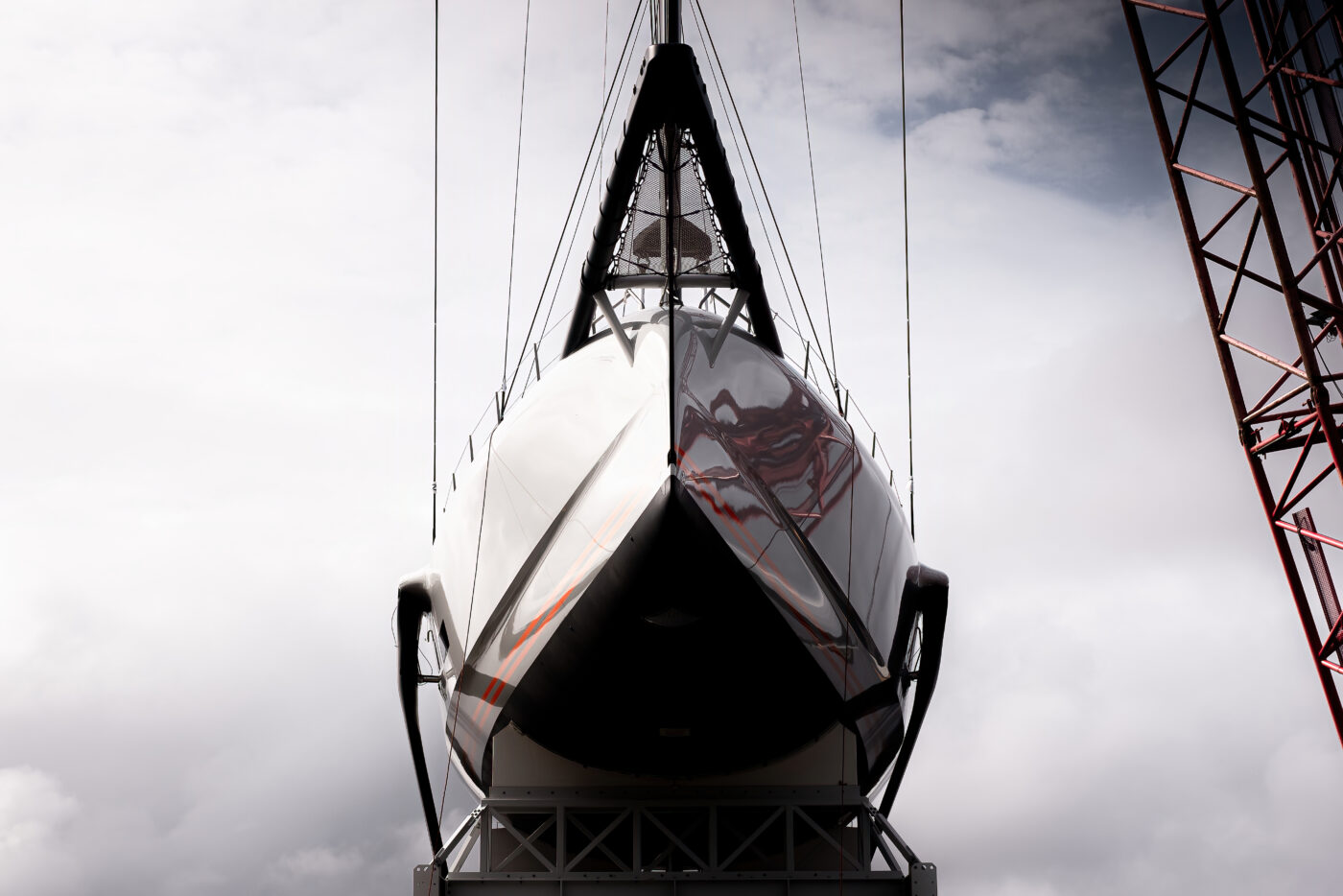
How to build custom
25 February 2025
Baltic Yachts’ EVP Henry Hawkins has deep and broad experience of full custom sailing yacht builds on both sides of the fence. Before he joined us in 2013, Henry was involved in five Baltic projects as an owner’s representative and captain. Since then, he has guided more than 20 of our clients through the complex but immensely rewarding process of turning their ideas into a yacht that is every bit as good as they imagined. There’s nobody better to explain how it works – and how best to do it
Why build a full custom yacht instead of a standard or semi-custom model? ‘Just like bespoke suits and clothing, or houses and offices, it’s the luxury that comes from building exactly what you want, to fit you,’ Henry explains. ‘We’re not constrained by any set parameters except the obvious nautical ones. It has to float but other than that there are no rules. Why build custom? Because you get exactly what you wish.’
It’s a myth that custom boats take longer to build than semi-custom ones, Henry explains. Yes, there’s a longer lead-in time for the design and engineering phase of the project – typically four to six months – but the actual build time is almost exactly the same.
Why build with Baltic? ‘Fifty years of experience is a lot to put on the table,’ he says. ‘It’s like opening a book. The answers are there but the book doesn’t shout at you. That’s something we’re proud of. The depth of experience is always available to guide and inform as we partner with clients in the development of their custom boat.’
Having your own bespoke yacht designed and built is enjoyable in its own right – and you miss out on most of that with a semi-custom build. ‘Often when we’re handing over a boat, the owner is already telling us the ideas they have for their next one,’ Henry says. ‘It’s a partnership, it’s a journey, it’s a unique experience to dream, then to refine, then to develop, then to build, then to receive. Every step in the process brings joy to the people who build with us.’
Everything stems from one simple question: how do you envisage using your boat? ‘That immediately answers a multitude of other questions,’ Henry says. A few of the key considerations include whether the boat will be raced, cruised or both, is it going to be chartered, do the owners enjoy coastal, offshore or ocean sailing, will it have crew, what level of service they expect from the crew, how many cabins they are likely to need and what sort of guests they are going to have on board?
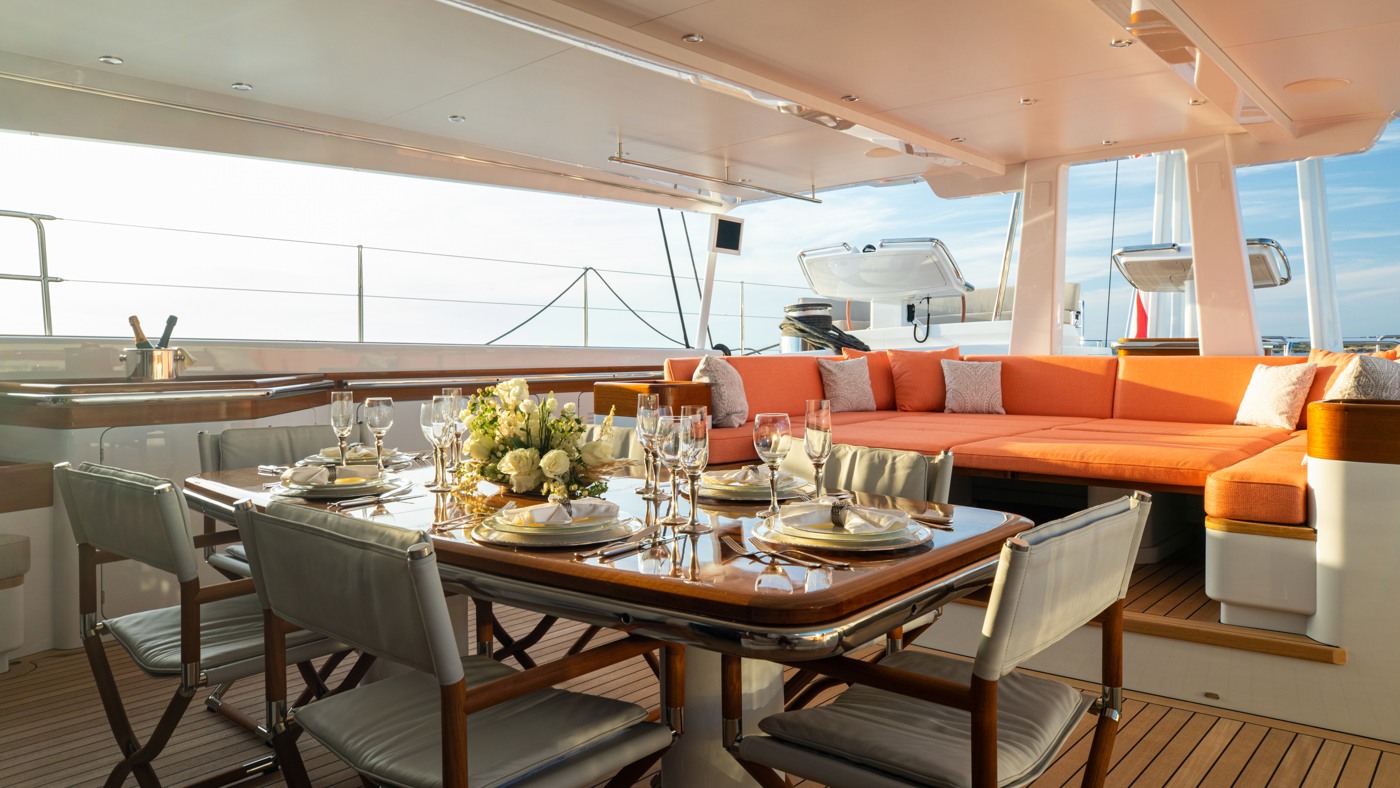
‘For example, a client might say they’ll have lots of kids on the boat,’ he says. ‘That means extra safety considerations, plenty of bunks for them – and also it’s quite likely that they’ll want the sanctity of the owner’s cabin to be preserved. The Baltic 146 Path is a classic example of that. Her owner sees the boat as an opportunity to gather three generations of his family together. So we ended up with a huge amount of inside living space and a large, deep and well-protected cockpit.’
A common misconception is that you need vast technical knowledge and personal experience of sailing to make a custom build worthwhile. You absolutely don’t, Henry says. You’ll have plenty of expert guidance, but be prepared to devote a fair amount of thinking time. ‘You have to be invested in the project to get the true benefit,’ he says. ‘Without that you’ll still get an excellent boat but can you truly say it’s yours?’
Baltic Yachts’ reputation for quality and performance attracts many clients who are accomplished, lifelong sailors and we’re proud to be held in such high esteem. We also have clients who are new to sailing and we’re equally proud of our ability to guide novice owners through a custom build, helping them make informed decisions and ensuring that they enjoy the process as much as the end result.
‘I always encourage them to visit other yachts,’ Henry says. ‘We have loyal clients who are always willing to open their yachts for potential new clients to look around and get a good sense of styling and layouts. Talking to other owners and their crews on board you’ll often get a feel for the systems side of it. Getting out on the water is also invaluable, so chartering a sailing yacht is definitely time well spent.’
Regardless of experience, Henrys’ advice is to start with a notebook, jotting down ideas, likes and dislikes, styling and features that you see on other yachts, whether in pictures and videos or in person, gradually compiling a wide-ranging wish list that over time builds into a design brief for your own ideal boat. ‘We’ve had a number of clients do this and it works really well,’ he says.
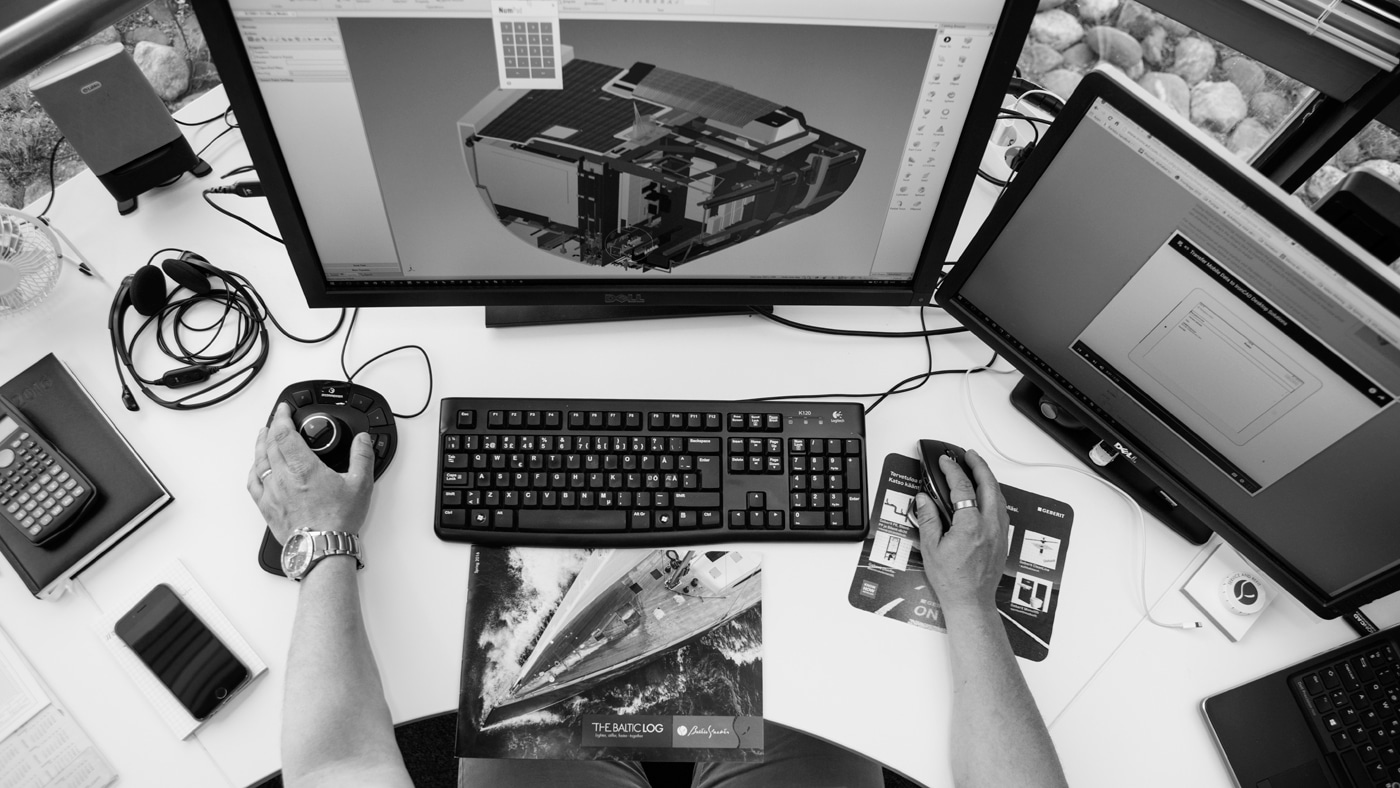
DESIGN AND DEVELOPMENT
The next step is putting together the design team: naval architect, interior designer and owner’s representative. Quite a few clients over the years have asked us to do all the design work ourselves. Even though we have all the skills in house to do that, we encourage them to appoint their own project team with whom we’ll work with closely on all aspects of design, development and engineering.
‘The choice of naval architect is a very personal one,’ Henry says. ‘It’s important that you gain their full attention and commitment, or you risk just being handed an old design. It’s worth considering the potential resale value of a yacht designed by a well-known naval architect, but balance that against the value of an up-and-coming naval architect who will give absolutely everything to the project.’
Some owners have a preferred naval architect in mind and engage them initially for a design development before awarding the full commission. Others give a design brief to several naval architects and ask them to work on concepts.
Around the same time, the owner’s rep is engaged with a first task of drawing up a working specification. This covers every aspect of the yacht from interior styling and systems design to the rig, sail handling setup and so on. ‘As boats have got bigger and more complex, with advanced technology and systems implemented and installed, having a solid and highly detailed working spec at the start of the project has become increasingly important,’ Henry says. His advice is to select an owner’s rep with a lot of prior experience, specifically on large sailing yacht builds.
The interior designer is another very personal choice. It helps to have a yacht interior specialist on the team with knowledge of yacht construction and the compromises that have to be made, but we’ve worked with innovative designers from outside the marine sector like Andreas Martin-Löf on the Baltic 110 Zemi, with superb results. ‘He really appreciated working with us because we were open to listen to him coming from a completely different industry,’ Baltic’s Elisabet Holm explains. ‘We attract people like that who are creative and also open to listening and learning.’
WHY BUILD IN COMPOSITE?
Carbon composite construction lends itself especially well to a full custom build. The primary benefit, of course, is weight reduction. Combined with its exceptional stiffness, this makes a huge difference to sailing performance. Weight is crucial when considering the load cases on board from the sail handling systems to the power requirements for propulsion. ‘Another benefit of composite is flexibility in styling and design,’ Henry says. ‘Complex curvatures are more easily achieved.’
Thermal efficiency in the hull and deck is also a significant advantage, and not just to boost the efficiency of air conditioning systems in hot weather. ‘We’re getting more questions about sailing in colder climates and on some boats we’re using used thicker sandwich construction to offer insulation against cold,’ he says.

‘There’s a great benefit in using advanced composite materials for high latitude and blue water sailing. We can go to single skin on the waterline for ice, and many of our boats employ sacrificial bows and for abrasion resistance we’ve used kevlar skins on the outside.
The myth that composite boats are noisy has been dispelled many times over. ‘Any level of noise reduction can be achieved,’ Henry explains. ‘It’s a question of what you are prepared to concede in terms of interior volume and weight. We’re building boats that are quieter than people’s homes, even quieter than libraries.’
The question about noise reduction is no longer what’s possible but how far you want to go. ‘I’ve sat in some cabins where it feels like the world has been sucked out because you can’t hear anything,’ he says.
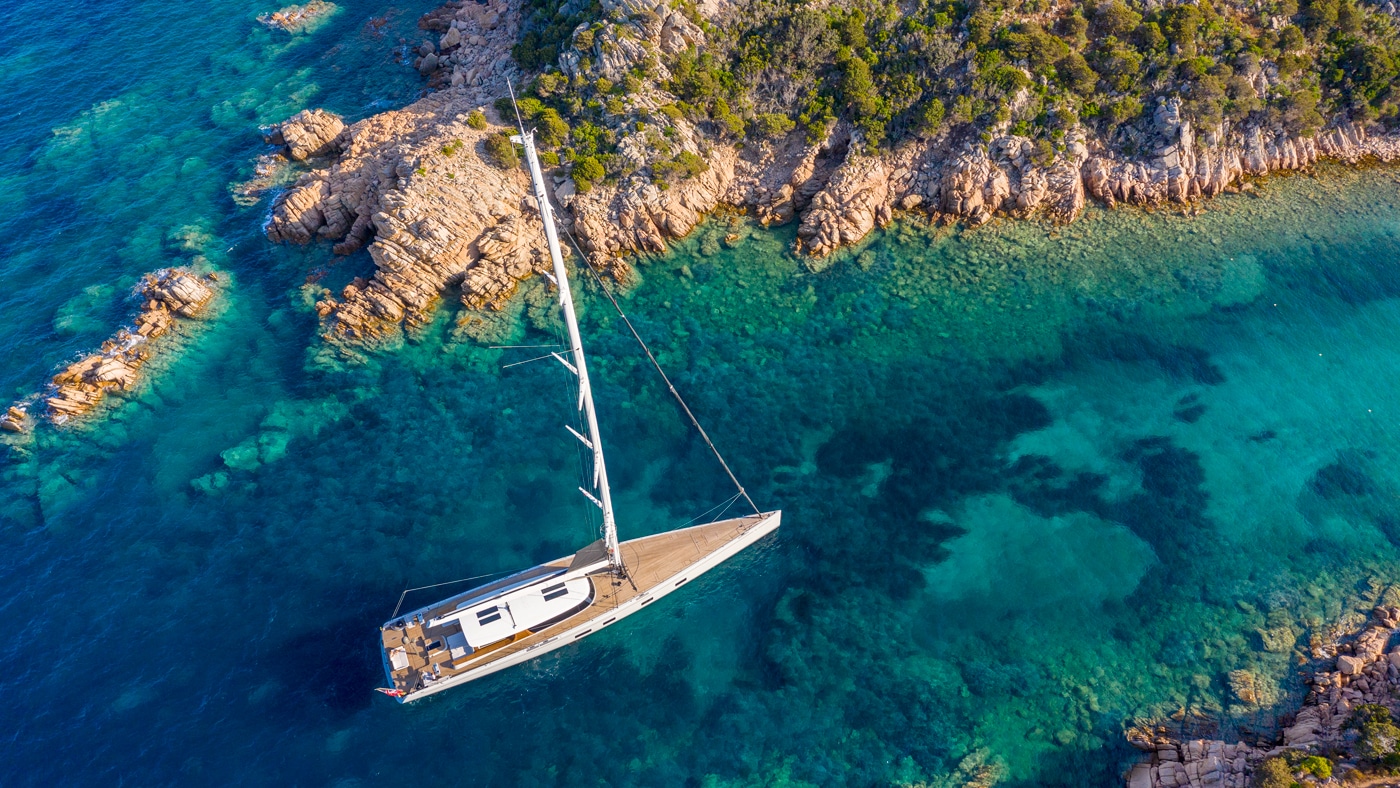
EFFICIENCY AND FOOTPRINT
Many clients now want to discuss the footprint of their yacht and we’re keen to help them make informed decisions. ‘A big part of Baltic is our ability to learn and when it comes to environmental impact we’re learning all the time,’ Henry says. ‘We know about things like hybrid drives and electrical draw but it’s a two-way street.
‘Clients will often come with ideas and concepts, for example paints and glass treatments, and we’ll work with them to understand whether it really is a benefit. And it’s not just clients, the young people in our workforce demand it. They want to work somewhere that has respect for the outside world rather than just commercial considerations. It’s an important part of us.’
READY TO BUILD
The last step before a build begins is enabling the client to double check some of the key spatial considerations such as sight lines and ergonomics. ‘There are very few custom boats where we don’t make some kind of mock-up,’ Henry says. ‘We’ve built the entire yacht, the whole foredeck, we’ve done the cockpit and steering consoles. We often mock up cabins to show the finish, the feel, the handles, the lighting, everything.’
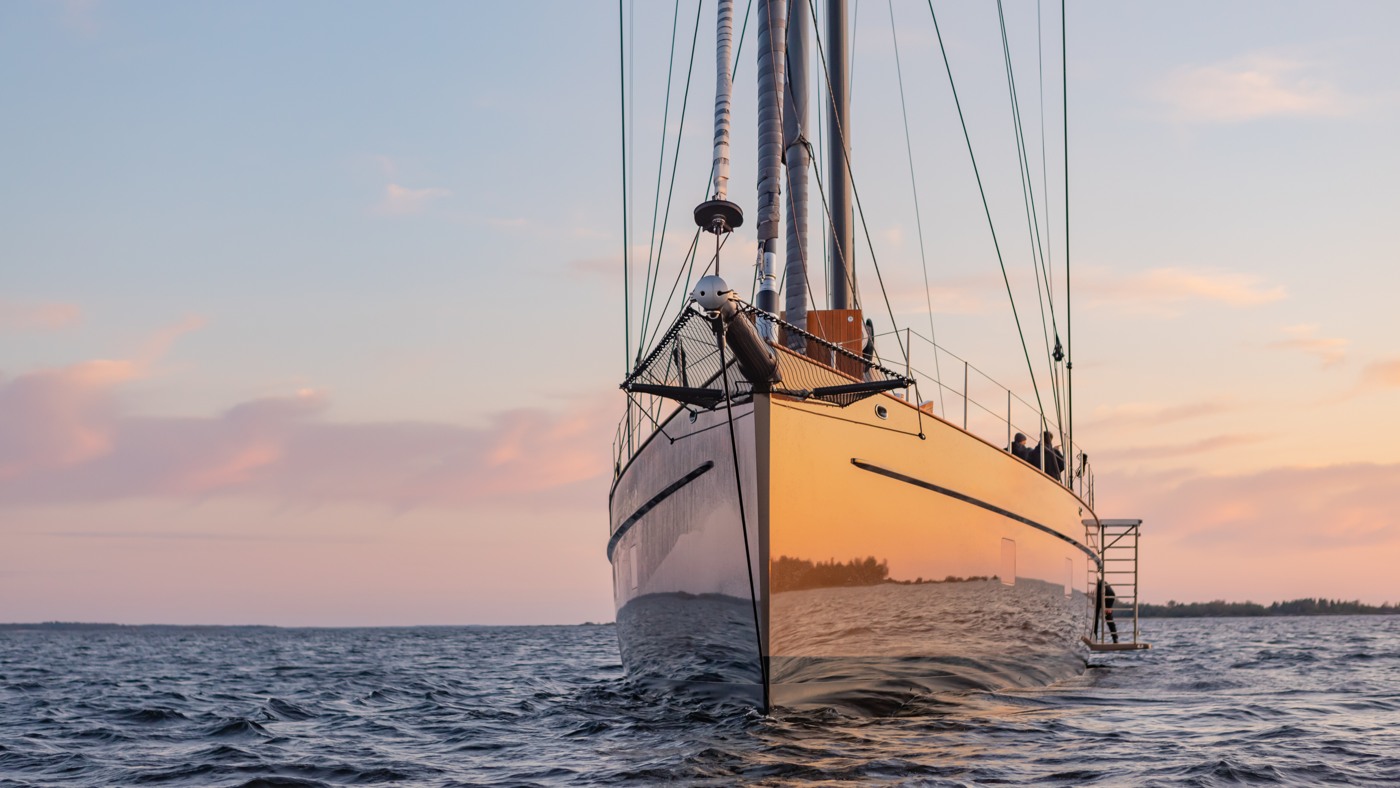
‘Before we started building Canova, the Baltic 142, we hosted dinner for the owner in a plywood mock-up of the cockpit. And we ate lunch inside a full-size mock-up of the Baltic 111 Raven in Helsinki. We do also use augmented reality glasses but still nothing beats physical touch and feel.’
Unlike production or semi-custom boatbuilding, a custom project at Baltic Yachts allows a lot of scope to innovate, manipulate, incorporate changes and modifications through the design and build. ‘You can draw everything all day long but with one-offs you’re always going to find little nuances that need to be amended and we’re open to that,’ Henry says. ‘From the engineers to the people on the shop floor, the foreman knowing that something can be changed to avoid a future problem, that’s experience, that’s what you get building with Baltic.’
There is also more scope for alterations if the owner has a change of mind. ‘It does affect things of course but changes can be incorporated. We have this flexibility because we’re a self-contained boatbuilding facility with every faculty, every discipline in house. If something needs to pause we can continue in other areas.’
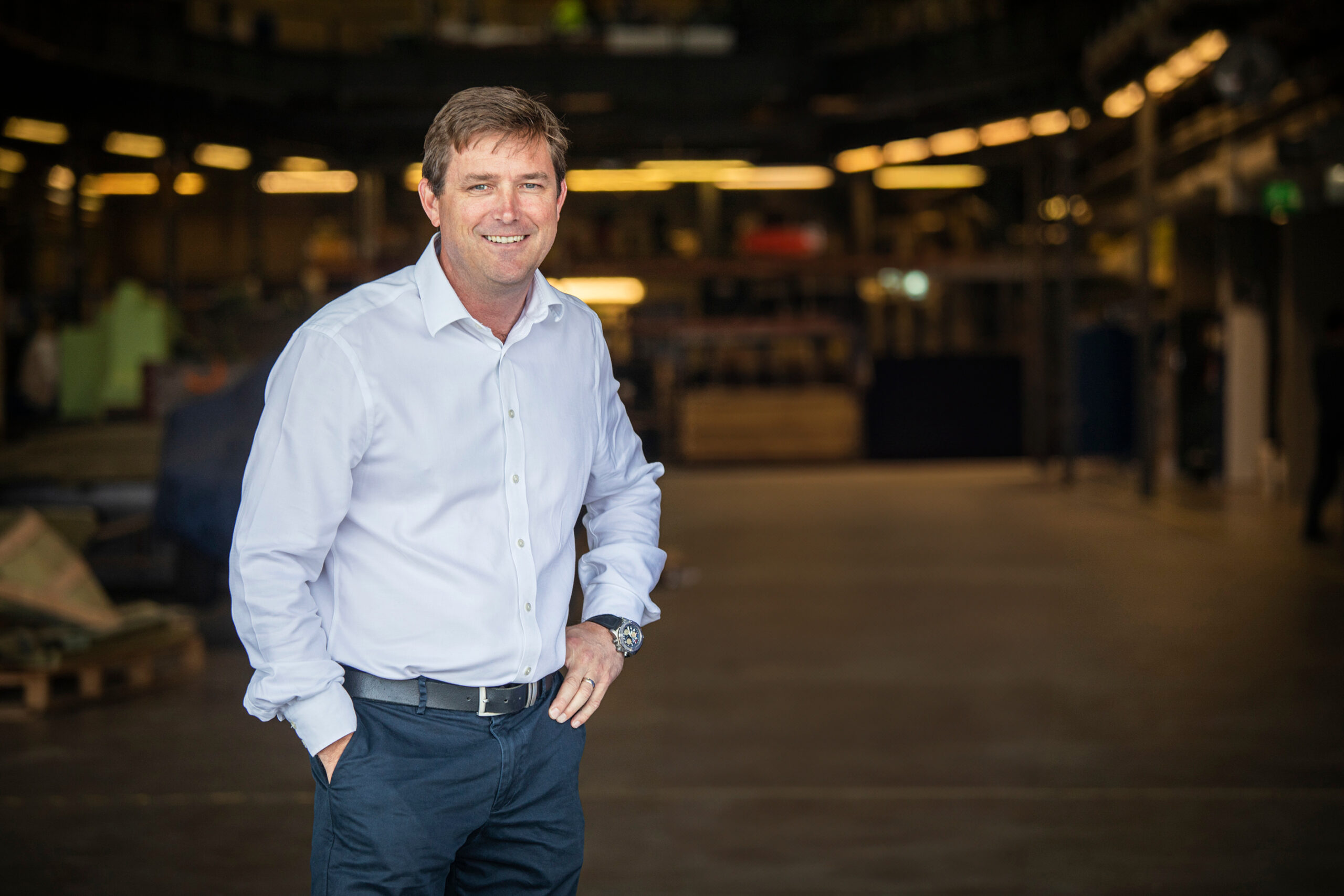
SEE YOUR BOAT TAKE SHAPE
A large part of the pleasure in a custom build is coming to visit the yard. Owners and their teams are always very welcome. ‘Only when you’ve stood in the shipyard surrounded by the people building the boats do you truly understand what you’re getting,’ Henry says. ‘That’s such an important part of it, to be invited to be part of that world for a period of time is exceptional. When a client comes to visit, we senior managers often get discarded pretty quickly. Their interest is with the project manager, the foremen, the guys on the floor. And that’s wonderful.’
‘Our expertise has enabled us to deliver 12 yachts over 100’ LOA in the last 10 years, all within 3% of their contractual weight targets, within 3% of the original budget and on average within a week of their contractual delivery dates. A track record of which we are very proud’ Henry says.
This article was featured in the anniversary issue of Baltic Log. Read the full magazine here.
RECENT NEWS

16 September 2025
BALTIC YACHTS BRINGS BOLD NEW PROJECTS AND COMMUNITY SPIRIT TO MONACO
Baltic Yachts returns to the Monaco Yacht Show (24–27 September), to share what’s next in visionary yacht building. At our stand QH06 on Quai l’Hirondelle, we invite you to discover how Finnish craftsmanship, innovation, and passion for sailing are shaping the future of super...
More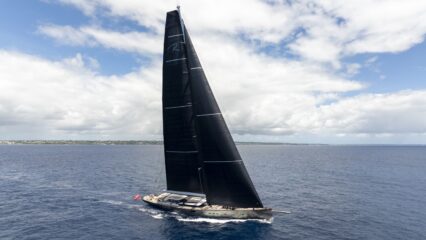
31 July 2025
Our award-winning yachts
Baltic Yachts has a remarkable track record of success in superyacht industry awards, with 39 major awards won in the last 13 years alone. These include awards for exterior and interior design, naval architecture, innovation and eco footprint, as well as five Sailing Yacht...
More
16 July 2025
The long way HOME
Very few people have sailed 15,000 miles against the prevailing winds and currents. Most ocean cruising sailors would say you’d be crazy to try it. But that was the first thing Axel Galpy-Massé did with his Baltic 51 – delivering her from Tahiti to...
More